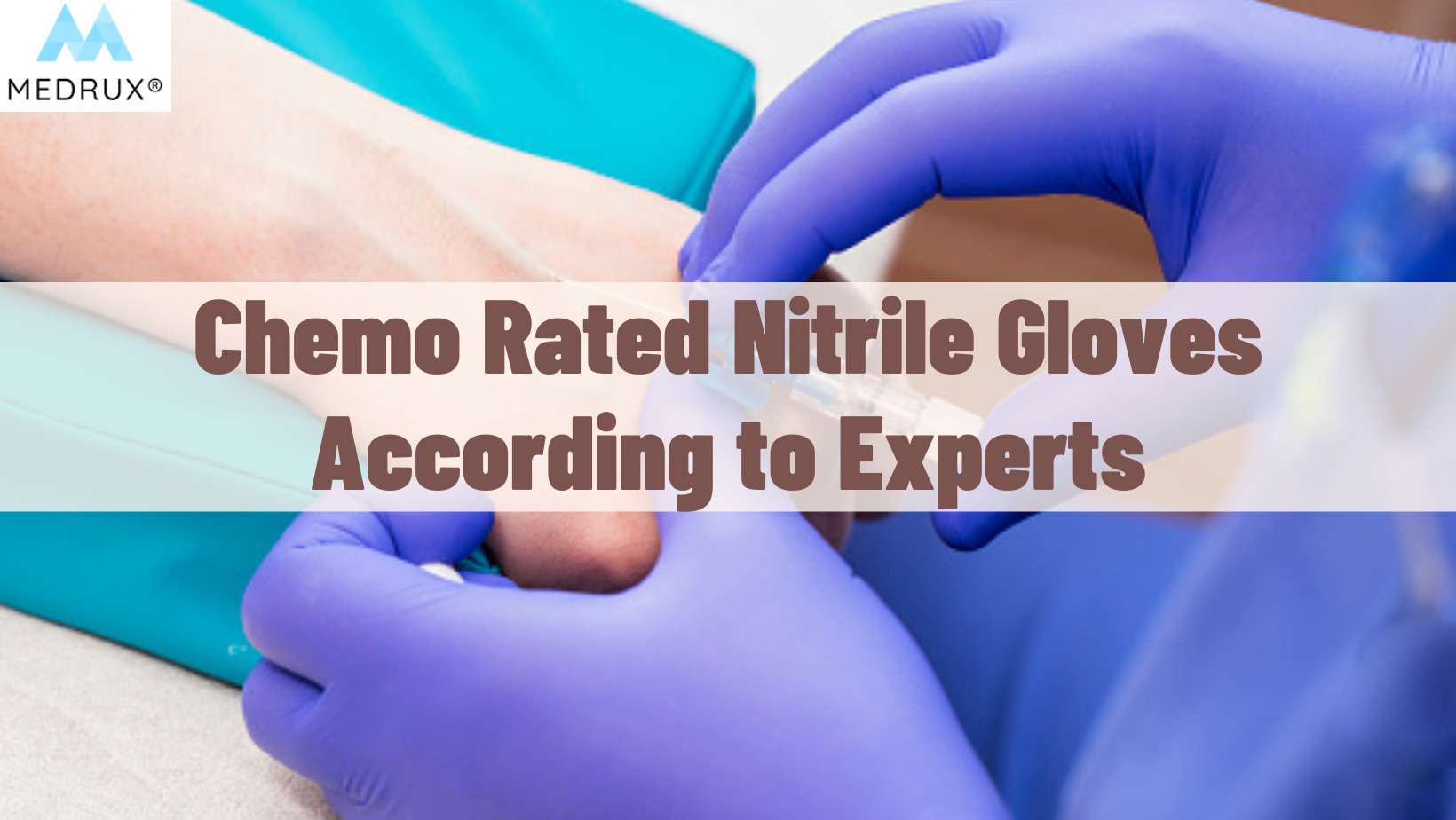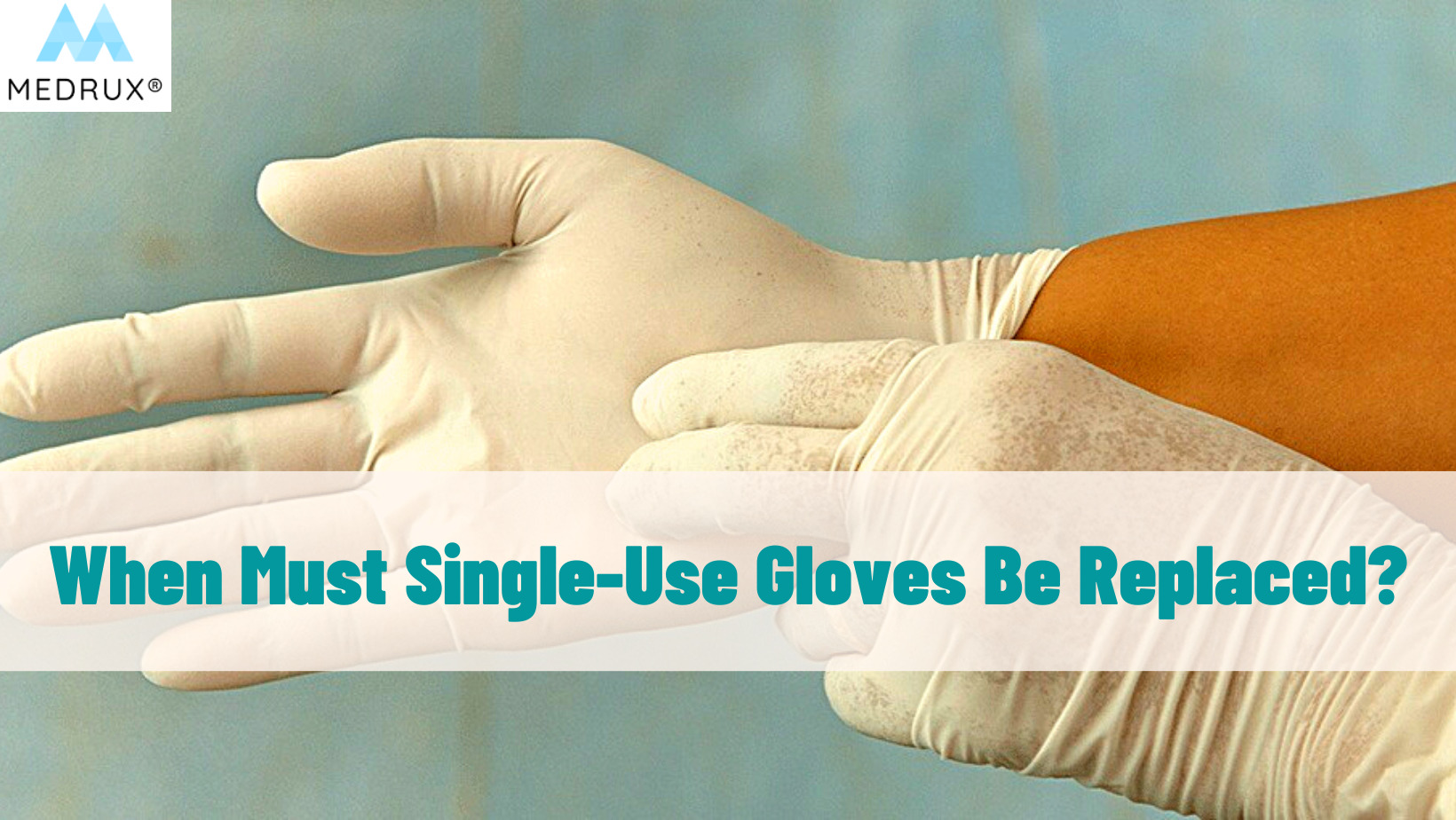Do you have sensitive skin?
Are you overwhelmed with the word hypoallergenic whenever you select a glove, yet your hand gets irritated when using them?
Are you looking for the best hypoallergenic gloves out there?
We’re here to help you understand what hypoallergenic gloves mean.
Our skin is a sensitive and delicate barrier that can be harmed easily by bacteria, pathogens, dirt, chemicals, detergents, etc.
To keep that protective shield robust, healthy, and protecting us, we must use gloves whenever needed.
Among different pieces such as scrubs, overheads, and overshoes, gloves are an essential part of PPE, and Chemical PPE is required in many industries to protect the worker’s hand.
But what if the gloves we use are the ones embedding this harm?
Whether you are using the gloves for work, house chores, or doing your favorite hobby,
If you have sensitive skin, it’s not the most straightforward task in the world to find suitable gloves that won’t irritate your skin and, at the same time, keep your hands well protected.
That’s why hypoallergenic gloves are made.
In this article, we will take about
- What are hypoallergenic gloves?
- Why should you consider switching to hypoallergenic gloves?
- How can disposable gloves turn into hypoallergenic gloves?
- What are the best types of hypoallergenic gloves?
Let’s dig in.
What are hypoallergenic gloves?
According to the FDA, there are no federal standards or definitions that govern the use of the term “hypoallergenic.”
The term means whatever a particular company wants it to point (1)
People think of hypoallergenic as “void of allergens.”
However, the truth is a little different.
In the dictionary, “hypo” is a Greek prefix that means “under,” “below,” or “less than normal.”
Hence, hypoallergenic is less likely to cause an allergic reaction as it contains fewer allergens.
The term “hypoallergenic” was first used in a cosmetics campaign in 1953 or perhaps in the early 1940s. Since then, it has been used to describe anything from pillows and skincare products to laundry detergent and even cats and dogs.
Hypoallergenic gloves, or as some people call them, “allergy-friendly gloves,” are designed to reduce or eliminate the possibility of an allergic reaction by containing few or no potentially irritating substances.
Hypoallergenic gloves are highly suitable for people with sensitive skin.
However, you could be allergic to one of the components in the hypoallergenic gloves, so make sure to read the labels well.
Let’s see how critical hypoallergenic gloves are and why you should consider switching to hypoallergenic gloves.
Why should you switch to hypoallergenic gloves?
Before we answer this question, we need to know what causes allergic reactions in gloves.
There are multiple ways gloves can cause allergic reactions through
-
Latex allergy
Latex was the most used material for disposable gloves. It is the most comfortable disposable glove with exquisite tactile and touch sensitivity and extraordinary protection levels.
Nevertheless, from the sap of natural rubber trees, latex gloves contain natural latex proteins that cause allergies and sometimes severe reactions in susceptible individuals.
Frequent and repeated long-term exposure to latex proteins could lead to latex allergy.
Latex allergy symptoms include coughing, rashes, itching, and, in more severe cases, difficulty breathing. It could be even worse, causing anaphylactic shocks.
Although latex allergies are found in less than 1% of the general population (2), people who are frequently exposed to latex, such as medical and health care professionals, have a much higher incidence of latex allergies.
Up to 17% of healthcare professionals have developed hypersensitivity to latex. (3)
As we can see, latex gloves are far away from being hypoallergenic.
Because of the several cases that have been reported, there was an urgent need to find alternatives to latex gloves, such as hypoallergenic latex-free gloves.
-
Irritant contact dermatitis
It’s a common, non-allergic reaction in which your skin becomes dry, itchy, and irritated.
Why does it happen?
It happens because of the long and frequent exposure to the gloves, friction, and sweating between the hands and the gloves.
It occurs with many things, such as gloves, solvents, soaps, detergents, acids, alkalis, adhesives, household cleaning, and bleaching products; some may also be caused by makeup, hair dye, wool clothes, and sometimes metals.
Hypoallergenic gloves are usually designed to offer maximum comfort to avoid friction and sweating, thereby avoiding irritant contact dermatitis.
-
Allergic contact dermatitis
Unlike latex allergies, which can cause more life-threatening allergic reactions, this allergy could present as itchiness, red rashes, blisters, and swelling.
Why does it happen?
It happens because of exposure to the chemical accelerators and powders often used in the glove manufacturing process for natural rubber latex or synthetic rubber latex gloves.
Chemical accelerators are added to the nitrile gloves to enhance their properties; Three leading accelerators cause contact dermatitis: carbamates, mercaptobenzothiazole (MBT), and thiurams.
Thiuram accelerators cause over 50% of reactions, while carbamates cause about 30%. MBT only causes 1-5% of responses.
Powdered gloves have added cornstarch to help put them on and prevent the gloves from sticking together.
However, researchers have also shown powdered gloves to be a risk factor for postoperative wound infections and delayed wound healing.
Nevertheless, wearing them long enough can make the powder stick to your skin, causing sensitivities or allergies. It could also contribute to latex allergies.
On December 19th, 2016, the FDA banned the use of powdered medical/exam grade gloves due to concerns about patient sensitivity or allergies to powdered gloves (4)
In addition to these types of allergies, some factors could be involved in developing any kind of allergic glove reaction, such as
-
- Heat exposure, wetness, and moisture can make the skin more susceptible to inflammation.
- Friction from rubbing your hand against the gloves can aggravate the inflammation.
-
Other skin conditions, such as atopic dermatitis, eczema, or psoriasis.
With all of that in mind, you can see why people now usually decide to wear hypoallergenic gloves.
To summarize, glove allergy could be due to latex allergy, contact dermatitis, or irritant dermatitis.
They could also develop with frequent exposure to latex gloves or powdered gloves.
If you’re concerned about allergies or skin irritation or have sensitive skin that quickly gets irritated.
Should you consider switching to hypoallergenic gloves?
Hypoallergenic gloves offer great comfort and protection and have the least potential to cause such allergies and allergic reactions.
They’re latex-free, accelerator-free, and powder-free.
But how exactly can ordinary gloves be turned into hypoallergenic gloves?
Let me tell you the various ways this could happen.
How can disposable gloves turn into hypoallergenic gloves?
Hypoallergenic gloves can be created through different processes to remove all the allergens and, at the same time, make them easier to don and doff without being powdered.
Let’s look at some of these processes that manufacturers use.
-
Chlorination
Gloves are treated with chlorine gas or a hypochlorite and hydrochloric acid solution, washed in an aqueous ammonia solution, rinsed with water, and dried.
This process also reduces the surface tackiness of the hypoallergenic glove and gives it a softer texture.
Chlorination is preferred for latex gloves.
Why?
Because it significantly reduces the level of powdered residue and latex proteins, making the hypoallergenic glove less likely to cause latex allergy.
However, they can be used in nitrile hypoallergenic gloves as well.
-
Coating with a polymer
This is a more recent and newer method than chlorination.
This method applies a coat or inner lining to the gloves using polymers such as silicones, acrylics, and hydrogels.
What’s more impressive about this process is that it’s odor neutral.
What does it mean?
You wouldn’t have to worry about your skin irritated by perfumed polymers.
This process is frequently used with hypoallergenic nitrile gloves.
Why?
It keeps the color of the hypoallergenic glove consistent, whereas chlorination can cause some yellowing.
This process can also be used in latex gloves to provide a barrier limiting latex protein migration.
-
Polyurethane coating
This method is usually used with vinyl gloves.
It reduces the tackiness and makes the hypoallergenic gloves easier to don and doff.
Coated polyurethane hypoallergenic gloves are known for their high flexibility and grip features.
-
Leaching/washing
These processes are considered the new advancements in hypoallergenic gloves.
I applied on-line or in the gloves post-processing to reduce the gloves’ NRL protein allergen content.
The on-line leaching process considerably reduces the protein allergen content, but it happens from inside the hypoallergenic gloves.
The washing process is a unique high-temperature post-washing process called PEARL (Protein and Endogenous Allergen Reduction Leaching Process).
This process can eliminate more extractable proteins on both sides of the gloves and reduce chemical residues such as thiurams and sulfur, which could cause contact dermatitis.
-
Low derma technology
Low derma is a new original technology used by the most advanced manufacturers in the world of disposable gloves.
It’s used to create hypoallergenic nitrile gloves, providing maximum protection and comfort and a lower likelihood of causing the allergy.
It uses no Sulphur or chemical accelerators such as thiurams, thiazoles, or carbamates.
The hypoallergenic gloves made using this technology are an excellent choice for sensitive skin and those who suffer from latex or nitrile type IV allergies.
In conclusion, chlorination, polymer coating, and leashing processes can be used to make hypoallergenic gloves.
They can be used to minimize the proteins and allergens responsible for causing allergies and irritation to the skin.
Some new technologies, such as leashing and washing and low-derma technology, have made hypoallergenic gloves more reliable, safe, and secure.
So now you must be wondering what types of gloves can be hypoallergenic.
Let’s see.
What are the best types of hypoallergenic gloves?
After a long search to find the best hypoallergenic gloves, we have seen the following options to consider.
-
Hypoallergenic, accelerator-free Nitrile Gloves
Although nitrile gloves have some added accelerators that could cause a type of allergic reaction called a Type IV reaction and are characterized by severe contact dermatitis that may resemble a poison oak reaction, it happens in a small number of people, way less prevalent than latex allergy.
Furthermore, the new hypoallergenic nitrile gloves created with new technology are widespread.
Nitrile hypoallergenic gloves are now the go-to option for sensitive skin.
They are made of a blend of synthetic copolymers formed through the combining of acrylonitrile and butadiene. They are considered skin friendly.
Why?
Because nitrile is a hypoallergenic material, it contains no traces of latex proteins.
Moreover, they have no powder or accelerators, so they help avoid allergic dermatitis and help avoid both types I and type IV allergic reactions.
Nitrile hypoallergenic gloves are a tremendous option for those who are allergic to latex or have sensitive skin, as well as those who suffer from preexisting skin conditions such as eczema or psoriasis.
Even more impressive is that they are highly durable and protective as they have high chemical acids and are oil resistant.
In addition, they have an extraordinary puncture and tear resistance that is superior to that of latex.
Hypoallergenic nitrile gloves are tremendously used in various fields, such as:
- Homecare
- Chemical manufacture or use
- Cleaning and janitorial services
- Dentistry and dental hygiene.
- Emergency services.
- Floristry and gardening.
- Food processing.
- Hair and beauty salons
- Hospital and clinical duties
- Decorating and painting.
- Piercing and tattooing
Hypoallergenic vinyl gloves, which are made from polyvinyl chloride polymers, are an excellent option for those with sensitive skin.
Why?
Not only because they’re latex-free but also accelerator and powder-free.
They are durable but not as much as nitrile hypoallergenic gloves.
But they can protect your hands against many things, such as oils, chemicals, and water.
They’re mostly made for short-term tasks and moderately to low-hazard materials. They’re well suited to anyone working in the following roles/industries:
- Care homes
- Cleaning and janitorial services
- Dentistry and dental hygiene.
- Emergency services
- General assembly
- Healthcare
- Hospital and clinical duties
- Painting, printing, and decorating
-
Hypoallergenic neoprene gloves.
Hypoallergenic gloves made of neoprene are latex-free, accelerator-free, and powder-free.
They’re synthesized from the polymerization of chloroprene (2-chloro-1, 3-butadiene), which is carbon, hydrogen, and a chlorine polymer.
Hence, they work very well for those with latex allergies, sensitive skin, and skin conditions.
Moreover, they’re highly flexible, with excellent finger dexterity and high resilience to impacts, and with good cut and tear resistance.
In addition to moderate resistance to petroleum products and oils, they have superior resistance to environmental factors such as weather conditions, sunlight oxidation, ozone, UV radiation, and Freon.
They can be used in:
- Automotive repair work
- Mining and drilling
- Diving
- Cleaning
- Safety and construction
-
Hypoallergenic cotton gloves
MIt is made especially for people with sensitive skin and those with skin conditions such as eczema.
Hypoallergenic cotton gloves have a light hand-feel and are breathable and sweat-absorbing.
What’s more, is that they are reusable and easy to wear.
They’re made of 100% natural cotton, away from synthetic rubber, latex, and chemicals.
Hypoallergenic Cotton gloves can protect against dirt, splinters, and abrasions but, of course, to a lesser extent than rubber gloves.
They can be used in:
- Winter work gloves with lining
- Handling artwork, jewelry, coins, photographs, silver, etc.
- Treating hand conditions like hand eczema, dry hands, etc.
- House cleaning.
- Serving in luxury restaurants.
- Gardening
-
Hypoallergenic bamboo gloves
Hypoallergenic gloves that are made of bamboo are soft, lightweight, and eco-friendly.
Bamboo is one of nature’s most sustainable resources. Moreover, they are latex and allergen-free.
They’re breathable, easy to do, and highly comfortable to wear, with 2-3 degrees cooler than cotton or synthetic gloves.
Bamboo is four times more absorbent than cotton. Small micro-holes help prevent the build-up of moisture and improve hand ventilation.
It can be used in the following:
- Handling artwork, jewelry, coins, photographs, silver, etc.
- Treating hand conditions like hand eczema, dry hands, etc.
- House cleaning
- Gardening
- Janitorial work
-
Hypoallergenic Tencel gloves
Hypoallergenic gloves can be made of Tencel, a natural fiber from wood pulp.
These eco-friendly hypoallergenic gloves are known for being incredibly soft and gentle on the skin, which is highly favorable for people with sensitive skin.
What’s more, it can hold moisture and inhibit bacterial growth simultaneously.
In addition, it’s naturally itch-suppressing, so it works like magic for those with skin conditions like eczema and psoriasis.
Why?
Because they can be embedded with an anti-inflammatory zinc oxide layer, offering soothing relief for itching and speeding up the healing process if used with natural creams.
They’re made specifically for allergic people with eczema and psoriasis.
To sum it all up,
Hypoallergenic gloves are made to minimize allergic reactions.
They are latex, powder, and accelerator free.
They could be made of various materials, including nitrile, neoprene, vinyl, cotton, bamboo, Tencel, etc.
Of course, deciding which material you should use depends on your needs and the task you need to do, how long you need to wear your glove, and the dangers you may encounter while performing this job.
Finally, the most important thing is to read the labels on the gloves you’re buying. If there’s anything that you know for sure that you’re allergic to or it causes your hand to be irritated, you should consider switching to another type.
We hope you have all the information you need to know and that you understand hypoallergenic gloves better by now.
If you still have any questions, don’t hesitate to contact us.






